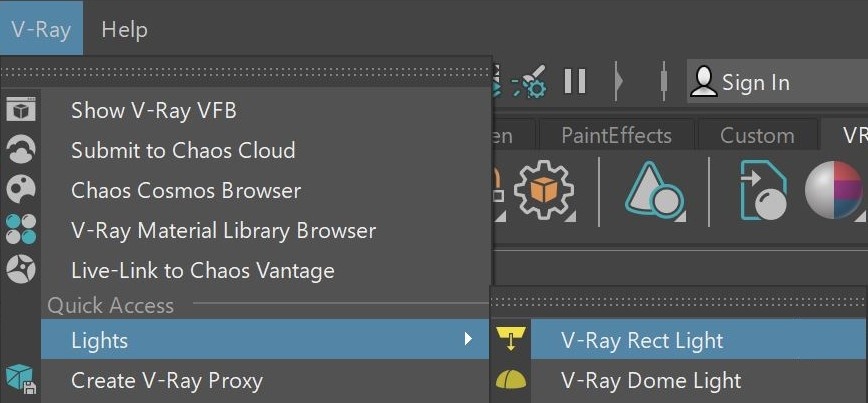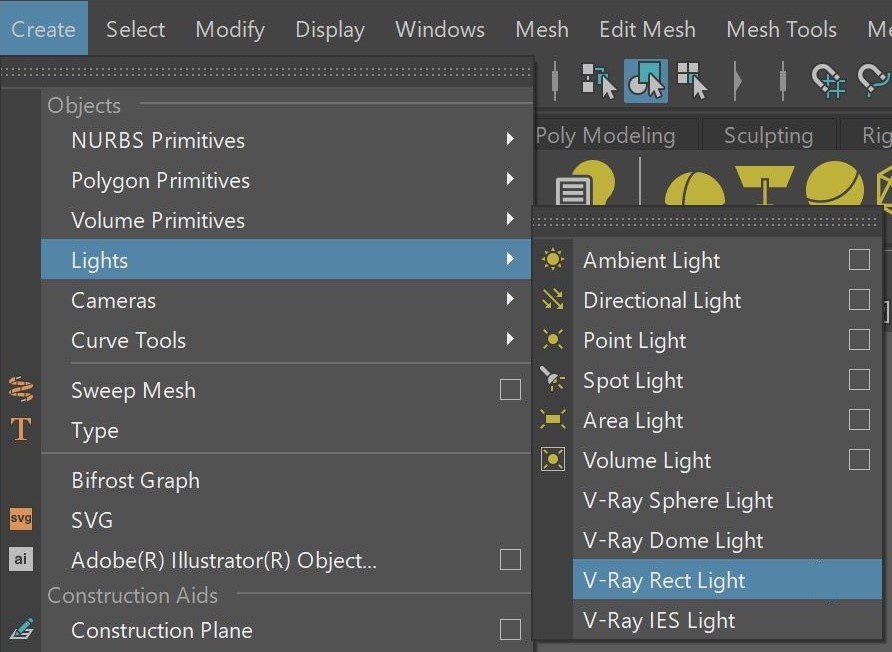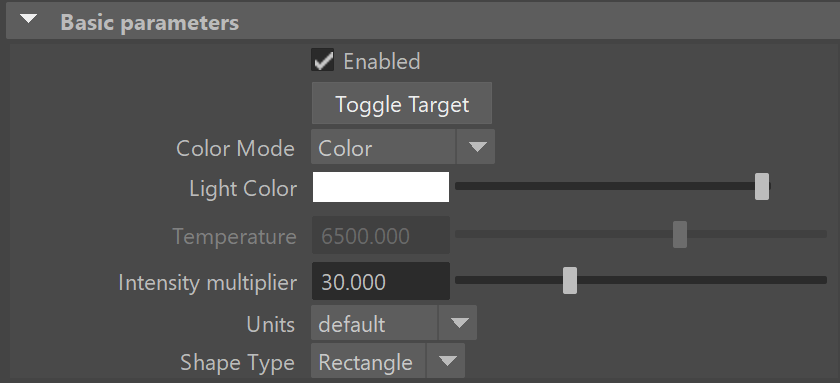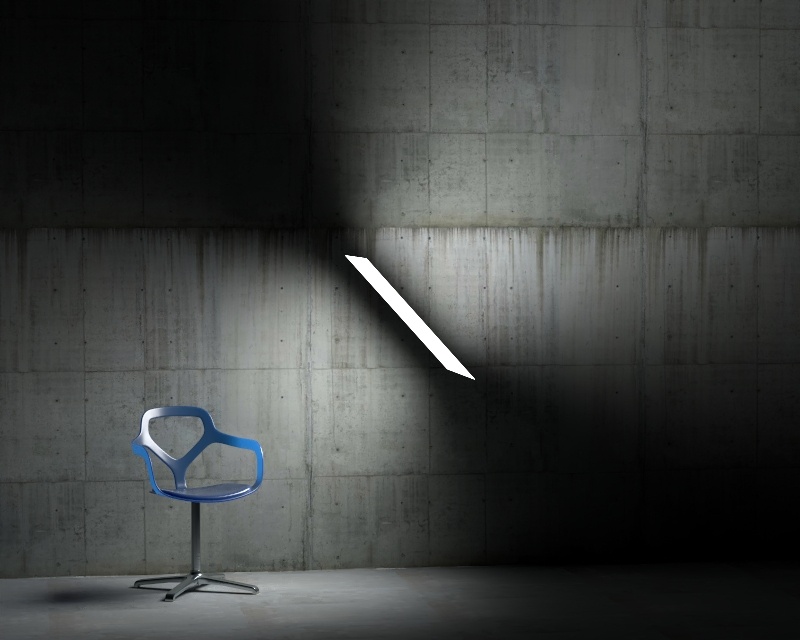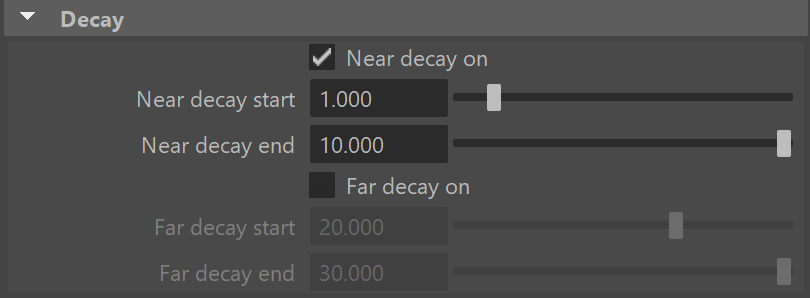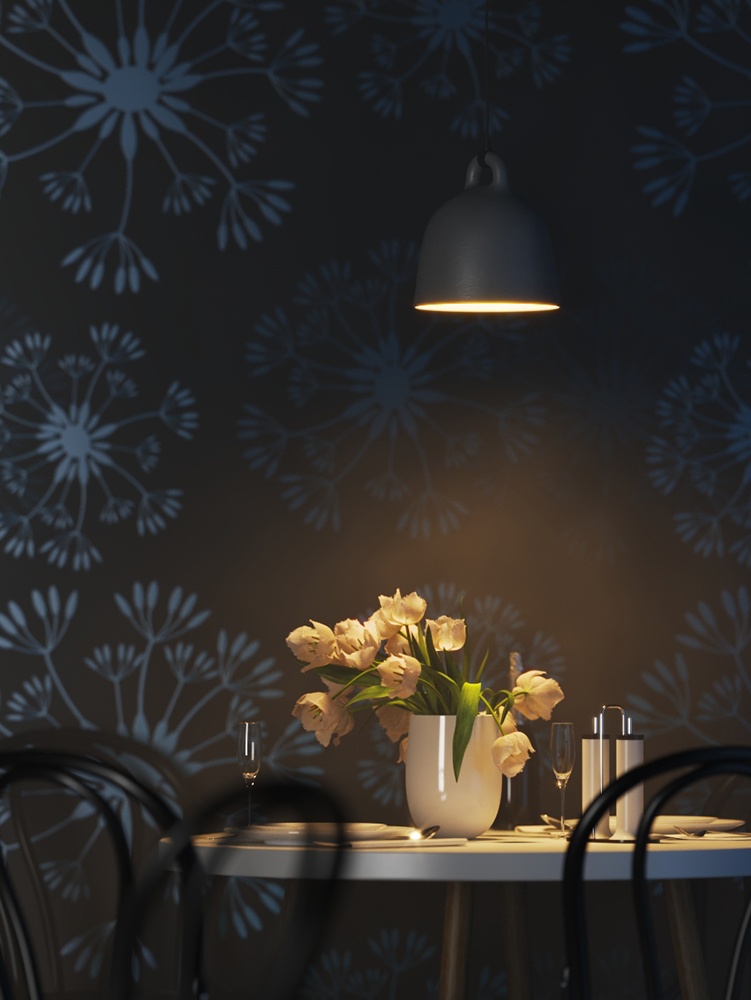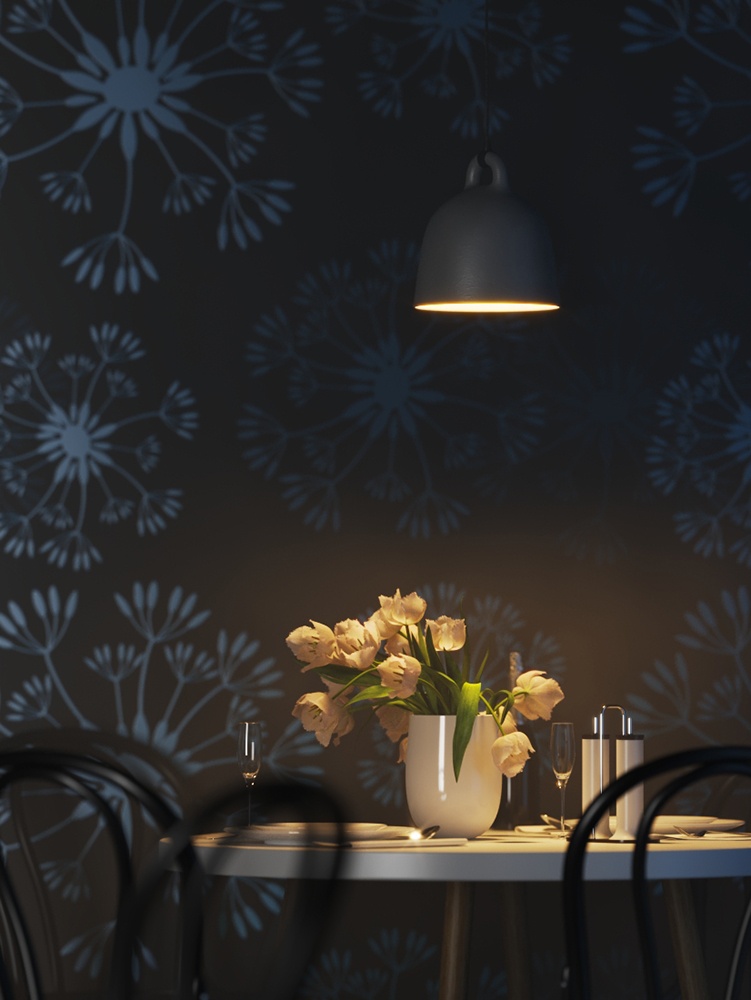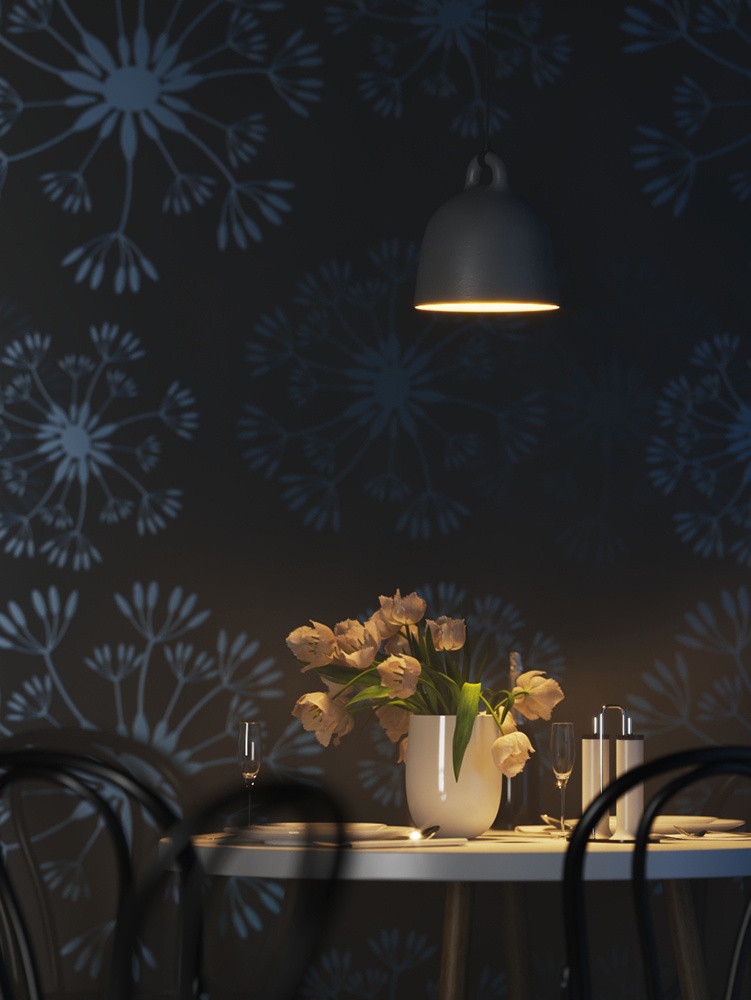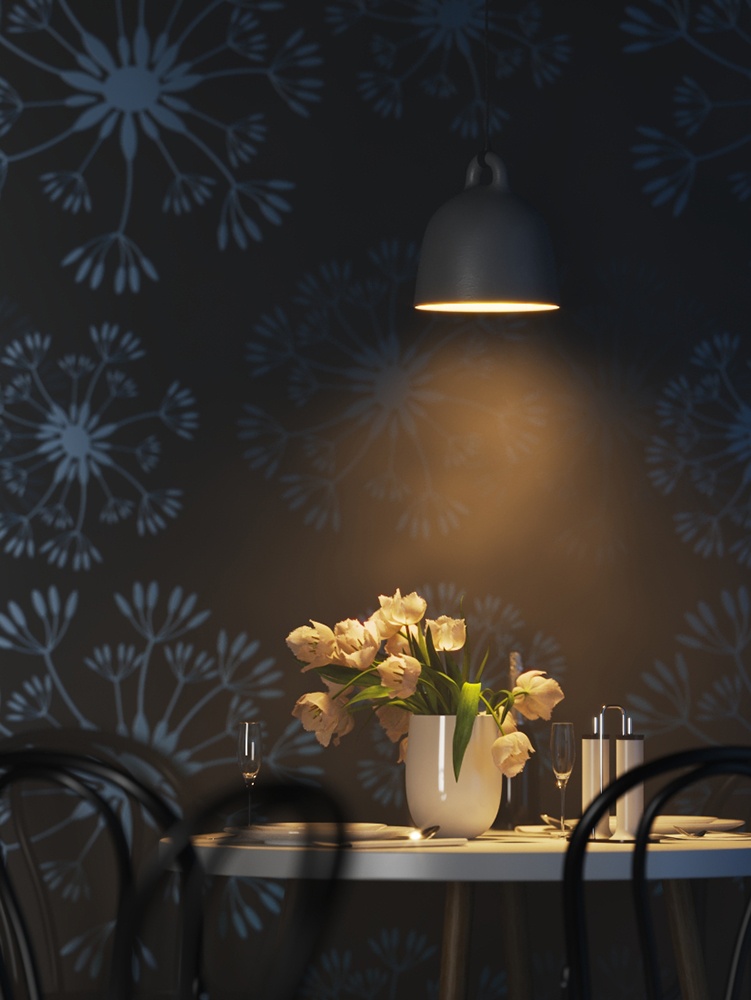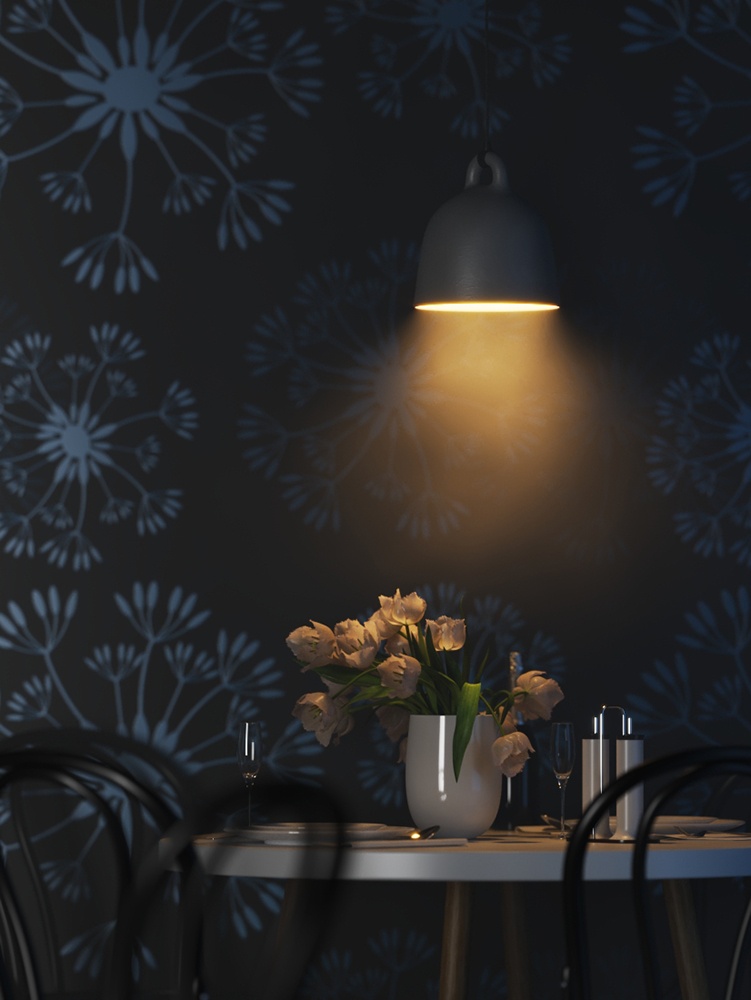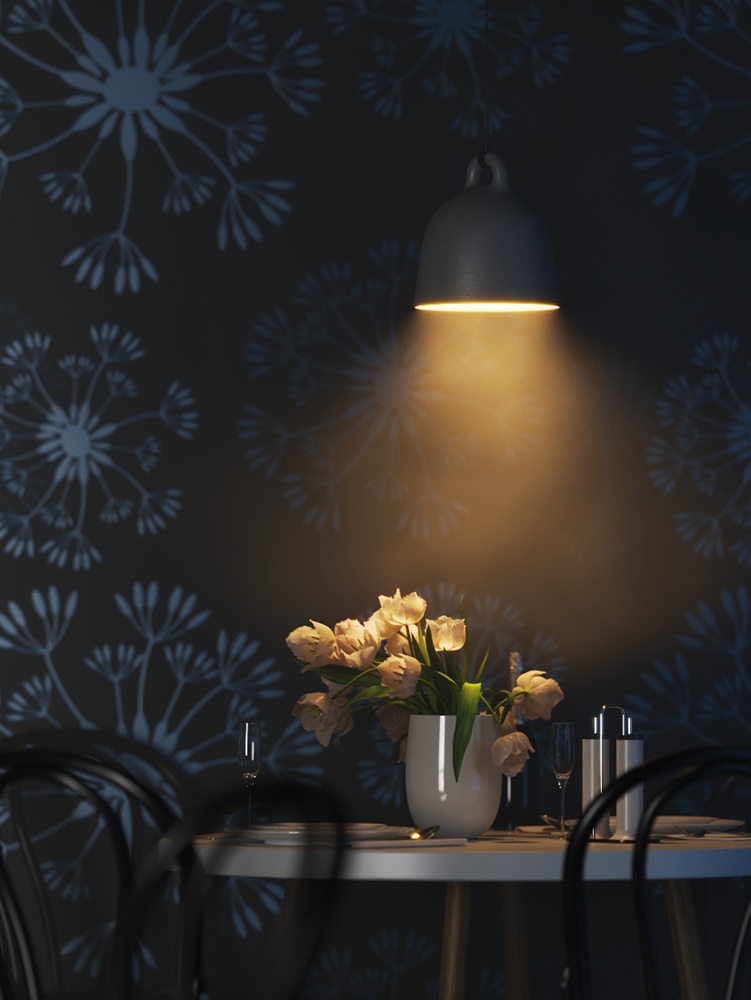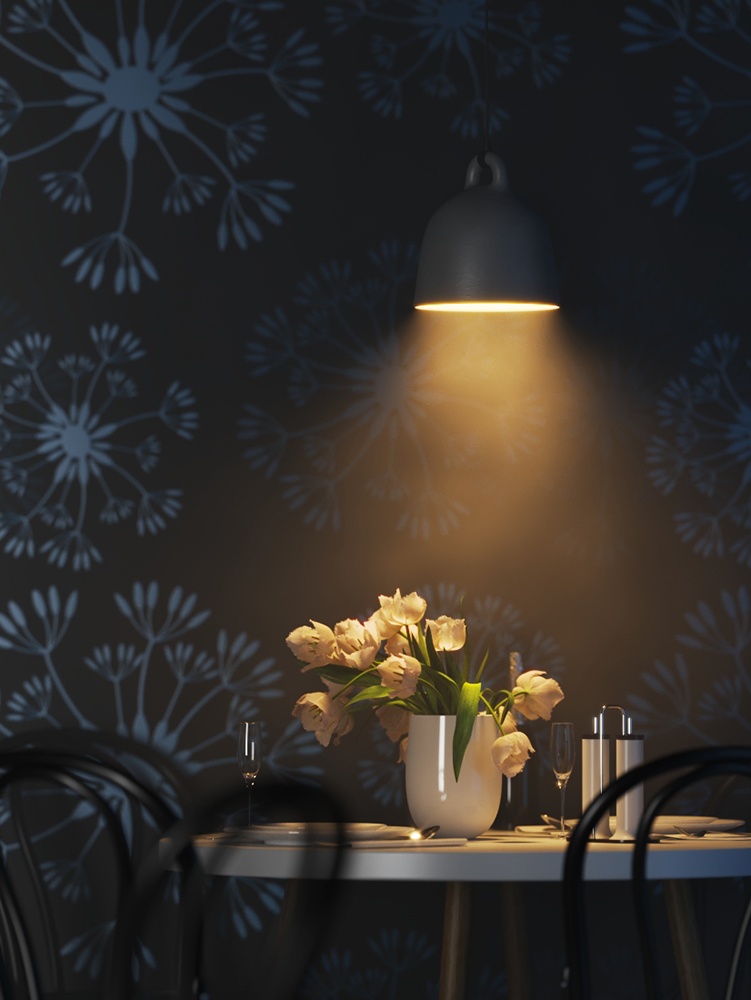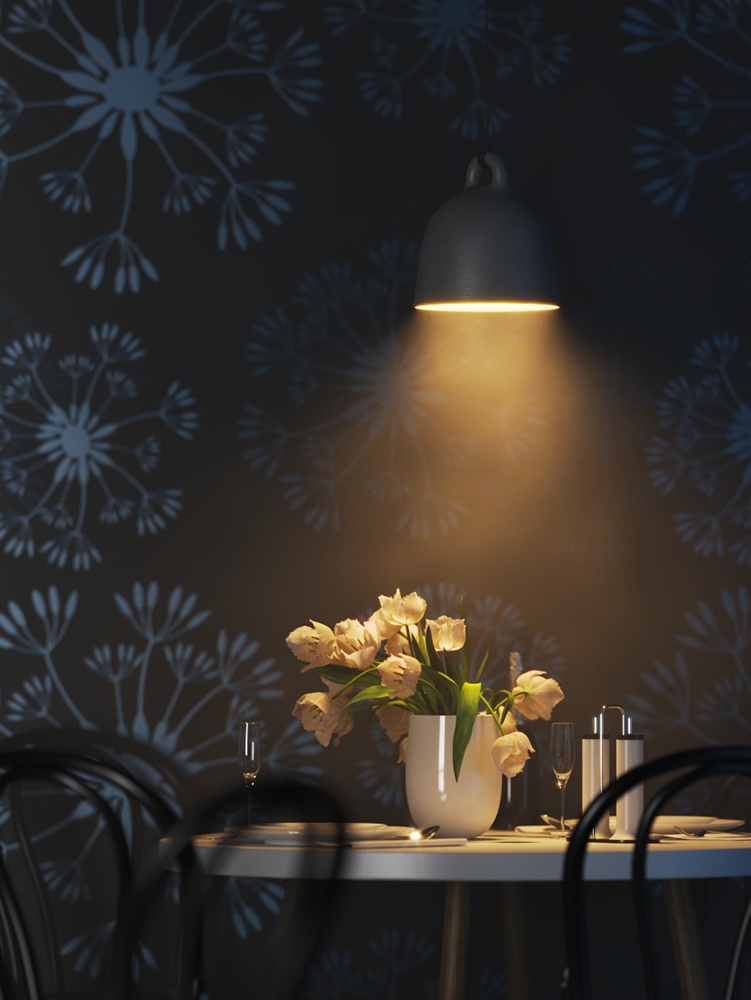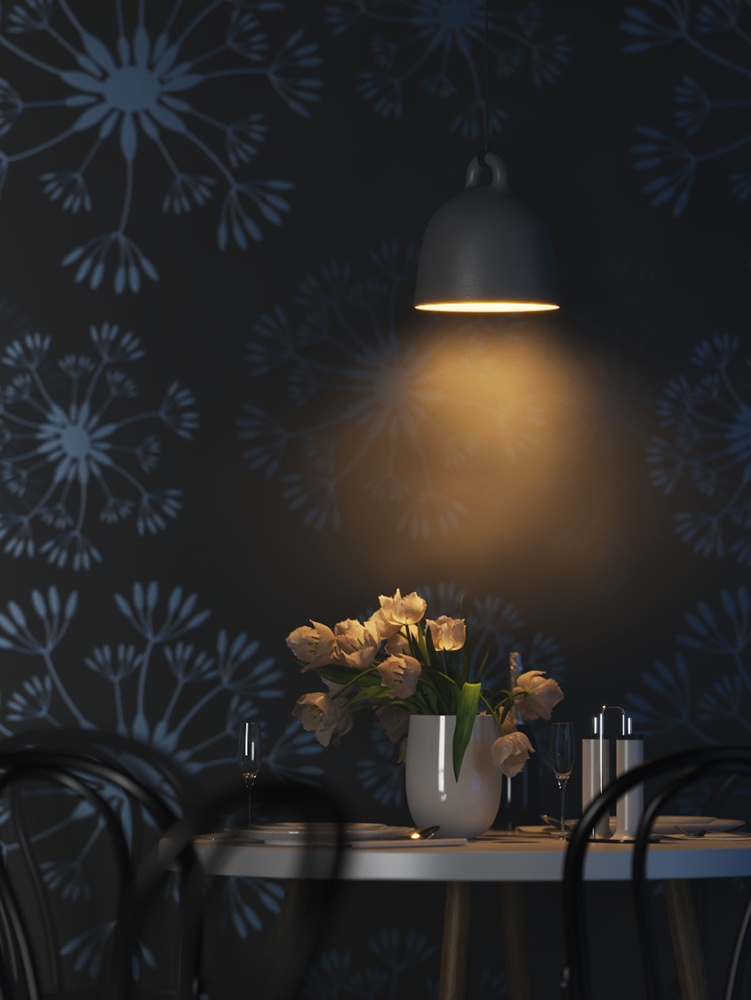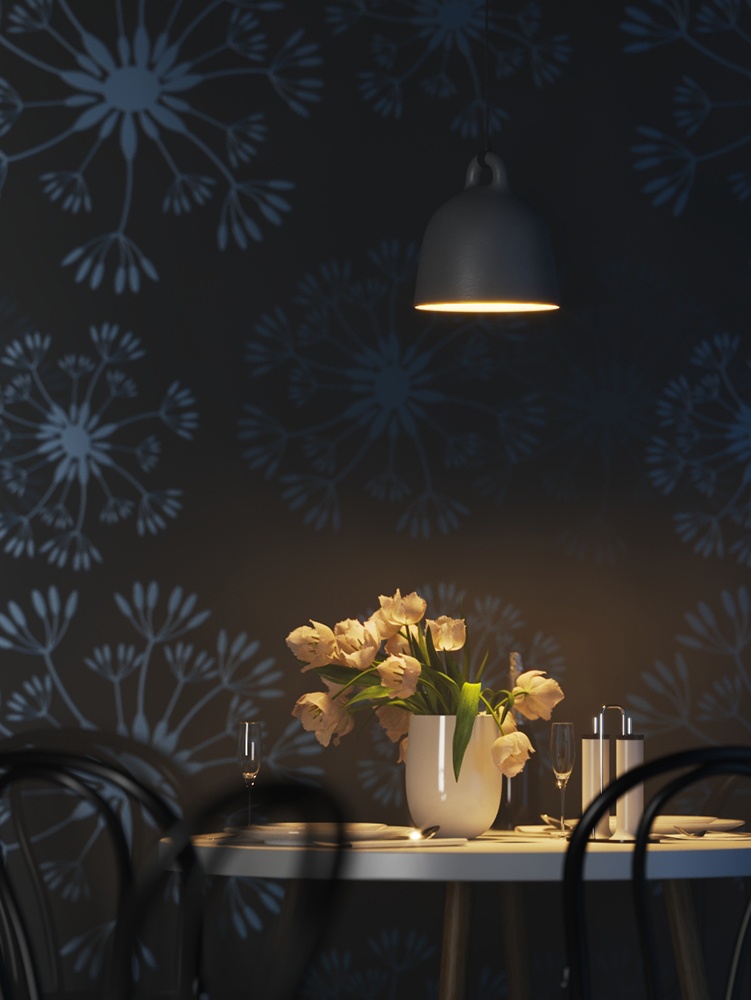The V-Ray Rectangle light is a planar light source with the shape of a rectangle or circular disc.
Overview
The VRayLightRect, also known as the V-Ray Rectangle light or an "area light" is a planar light source. The light's shape can be set as a rectangle or a circular disc.
Image © Yuki Sugiyama
Basic Parameters
Enabled – Turns the VRayLightRect on and off.
Toggle Target – Switches the light between being targeted and not targeted (free light). The Maya default hotkey T can also be used.
Color Mode –The mode in which the color of the light will be specified, either Color or Temperature.
Light Color – When Color Mode is set to Color, this color controls the color of the light. When using photometric units, this color is normalized so that only the color hue is used and the light intensity is determined by the Intensity multiplier.
Temperature – When the Color Mode is set to Temperature, this parameter controls the color of the light by degrees Kelvin.
Intensity multiplier – Multiplier for the light color; this is also the light intensity in the units set by the Units parameter.
Units – Choose the light units. Using correct units is essential when using the VRayPhysicalCamera. The light will automatically take the scene's unit scale into consideration to produce the correct result for the scale you are working with. The possible values are:
default – The color and multiplier directly determine the visible color of the light without any conversion. The light surface will appear with the given color in the final image when seen directly by the camera (assuming there is no color mapping involved).
Lumens – Total emitted visible light power measured in lumens. When this setting is used, the intensity of the light will not depend on its size. A typical 100W electric bulb emits about 1500 lumens of light.
lm/m/m/sr – Visible light surface power measured in lumens per square meter per steradian. When this setting is used, the intensity of the light depends on its size.
Watts – Total emitted visible light power measured in watts. With this setting, the intensity of the light does not depend on its size. Keep in mind that this is not the same as the electric power consumed by a light bulb for example. A typical 100W light bulb only emits between 2 and 3 watts as visible light.
w/m/m/sr – Visible light surface power measured in watts per square meter per steradian. When this setting is used, the intensity of the light depends on its size.
Shape Type – Specifies the light shape.
Rectangle – The VRayLightRect has the shape of a planar rectangle.
Disc – The VRayLightRect has the shape of a planar disc.
Size
U Size – Determines the width of the light measured in scene units. The width will be twice this value.
V Size – Determines the height of the light measured in scene units. The height will be twice this value.
Using the size parameters is the recommended method for controlling the light's size. Avoid scaling the light. Uniform scaling can be used when the scene needs to be scaled up or down, but non-uniform scaling produces skewed or elliptical shapes, which may produce incorrect results.
Directionality
Directional – When this value is 0, the light from the VRayLightRect is spread out equally in all directions. Increasing this value makes the light beam more narrow and concentrates it in one direction. For more information, see the Directional Spread example below.
Directional Strength – Controls the blend between diffuse distribution and directional distribution. For example, setting the directional strength to 0.900 makes the light emit a portion of its energy (i.e. 10 percent) with diffuse distribution. This makes the light visible from the side in the reflections. See the Directional Strength example.
Directional Preview Length – Specifies the length of the cone used to preview the Directional parameter in the viewport. This parameter is available only when Directional is greater than 0.
Directional Preview – Controls the appearance of the preview of the directional effect in the viewport. This parameter is available only when Directional is greater than 0.
Selected – The preview is displayed only when the light is selected.
Always – The preview is always displayed.
Never – The preview is never displayed.
Example: Directional Spread
The Directional parameter controls the spread of the Plane or Disc light. A value of 0 produces the maximum spread of light in all directions as seen below left, while a value of 1 creates a narrow 90-degree cone of light as seen below right.
Plane light with Directional = 0, 0.5, 1.0
Directional Preview = Always
This example demonstrates how the light changes when Directionality value is changed, ranging from 0 to 1. When the value is closer to 1, the light is more focused towards one point, while when the value is closer to 0, the light spreads to all sides.
Example: Directional Strength
In this example, we showcase the Directional Strength parameter and how it affects the reflections and refractions in the scene. Notice how the more we increase the Directional Strength, the less we see the reflection of the VRayLightRect in the glass and the reflection on the wall in the background. That is because the more we increase Directional Strength the more energy from the lamp is distributed directionally, i.e., concentrated only in the Directional spread. Normally, even with Directional set to 1, some of the light naturally diffuses a little. When we set the Directional Strength to 1, we create an unnaturally concentrated light beam in a small area.
Texture
Use Rect Tex – Enables the light to use a texture for the light surface. It is best to have GI enabled if there are surfaces that are close to a texture-mapped light. This allows V-Ray to use combined direct and indirect sampling for the light, reducing the noise for surfaces close to the light.
Multiply By The Light Color –When enabled, the colors in the texture are multiplied by the light intensity to adjust the brightness.
Rect Tex – Specifies the texture to use for the light. Note: If an RGBA texture file (a file that contains an alpha channel) is used, the file's alpha output must be connected to the Rect Tex A attribute to utilize the alpha channel on the light.
Rect Tex A – Specifies an alpha texture for the light. Note: The default value of 1 (fully opaque) remains unchanged whenever a file texture is connected to the Rect Tex attribute, even if that file contains an alpha channel. For a file's alpha channel to be utilized, it's alpha output needs to be connected to this attribute.
Show in viewport – Controls whether, and how, the texture is seen in the viewport.
Disabled – The texture is not displayed.
Texture only – The texture is displayed.
Texture*Intensity – The texture is multiplied by the light intensity before it is displayed.
Options
Double Sided – When enabled, light emits from both sides of the plane. For more information, see the Single-Sided vs Double-Sided Lights example below.
Invisible – Controls whether the shape of the VRayLightRect source is visible in the render result. When this option is enabled, the light source is not visible in the rendering. When this option is disabled, if the light source is seen directly by the camera or through refractions, it appears in renderings in the current light color.
Occlude Other Lights – Controls the behavior of invisible lights in relation to other light sources. When enabled, the light blocks the lighting from other lights as if it's visible. Also in reflections the light behaves as it's visible and occludes other lights. When disabled, the light is transparent for other lights and does not occlude them. This option doesn't affect visible lights (as they always occlude other lights) and dome lights (which are always additive).
Affect Diffuse – Determines whether the light affects the diffuse properties of the materials.
Affect Specular – Determines whether the light affects the specular of the materials. This means glossy reflections.
Affect Reflections – Determines whether the light appears in reflections of materials, both perfect and glossy reflections.
Affect Atmospherics – When enabled, the light influences the atmospheric effects in the scene.
Diffuse contribution – A multiplier for the effect of the light on the diffuse component.
Specular contribution – A multiplier for the effect of the light on the specular component.
Atmospherics contribution – Determines the amount of influence the light has on the atmospheric effects such as VRayEnvironmentFog, VRayVolumeGrid or Phoenix effects.
Example: Double-Sided Lights
This example demonstrates the behavior of the light when Double Sided option is enabled and disabled. When the Double Sided option is enabled, light is emitted from the two sides of the Rectangle light body.
Sampling
Light cut-off threshold – Specifies a threshold for the light intensity, below which the light will not be computed. This can be useful in scenes with many lights, where you want to limit the effect of the lights to some distance around them. Larger values cut away more of the light; lower values make the light range larger. When this value is 0.0, the light is calculated for all surfaces. This parameter is not available when the renderer is set to CUDA.
Override motion blur samples – When enabled, the Motion blur samples value overrides the default number of samples used to sample the current light for motion blur.
Motion blur samples – Number of samples used to sample the current light for motion blur.
Texture Resolution – Specifies the resolution at which the texture is resampled for importance sampling.
Shadows
Shadows – When enabled (the default), the light casts shadows. Disable this option to turn off shadows for the light.
Shadow bias – Moves the shadow toward or away from the shadow-casting object (or objects). Higher values move the shadow toward the object(s), while lower values move it away. If this value is too extreme, shadows can "leak" through places they shouldn't or "detach" from an object. Other effects from extreme values include Moire patterns, out-of-place dark areas on surfaces, and shadows not appearing at all in the rendering.
Shadow Color – Controls the color of shadows for this light. Note that anything different from black is not physically correct. This option is inactive when using the V-Ray GPU engine.
Decay
The Decay parameters determine how the light fades in and out. The Near Decay determines how light fades in. The light isn't at its maximum value at its source, but instead gradually increases until it reaches the Near end. The Far Decay determines how light fades out. The light isn't at its maximum value at its end, but instead gradually decreases after the Far start.
Decay option is useful for creating hotspots or controlling the length of a "God Rays" effect created with Environment Fog.
Near decay on – Toggles near decay on and off. See the examples below for more information.
Near decay start – Determines where the fade in starts. Anything before this point is rendered dark.
Near decay end – Determines where the fade in ends. After this threshold, the light is at its full value.
Far decay on – Toggles far decay on and off. See the examples below for more information.
Far decay start – Determines where the fade off starts.
Far decay end – Determines where the light reaches a value of 0, i.e. completely fades off.
This example shows the variances achieved by changing the Near decay start parameters only. This example shows the variances achieved by changing the Near decay end parameters only. This example shows the variances achieved by changing the Far decay start parameters only. This example shows the variances achieved by changing the Far decay end parameters only. This example shows some artistic lighting results achieved by using both Near and Far decay options.Example: Near Decay Start
Example: Near Decay End
Example: Far Decay Start
Example: Far Decay End
Example: Near and Far Decay
Photon Emission
This rollout is inactive when using V-Ray GPU.
Caustics subdivs – Only used when calculating Caustics. Lower values mean more noisy results but will render faster. Higher values produce smoother results but take more time.
Caustics multiplier – This value is a multiplier for the generated caustics by the selected object. Note that this multiplier is cumulative - it does not override the multiplier in the Caustics render roll-out section.
UI
Locator scale – Multiplies the size of the locator in the viewport. This does not affect the rendering.


